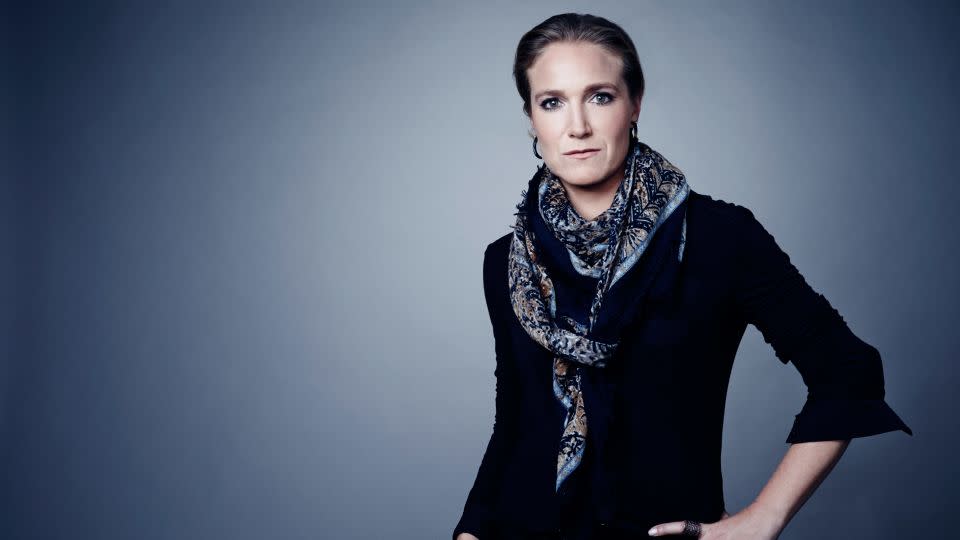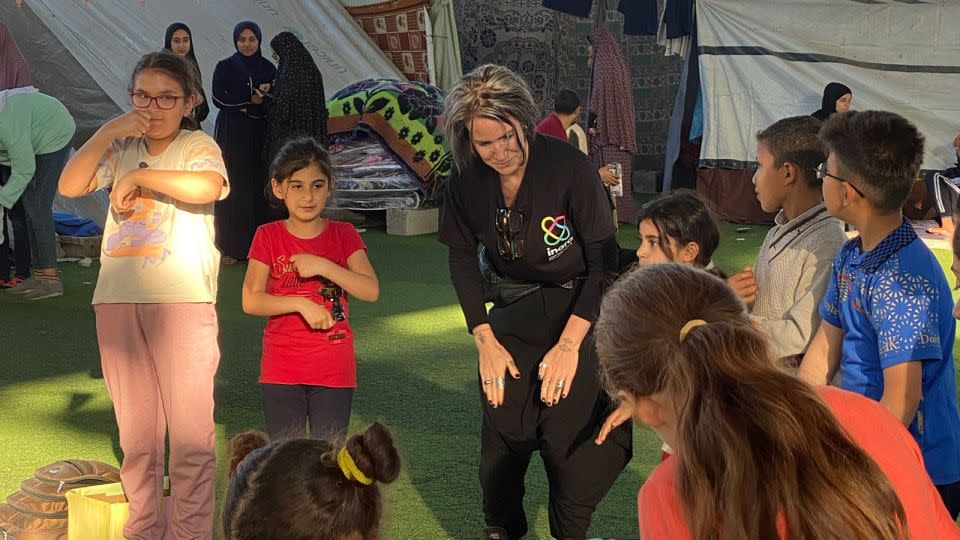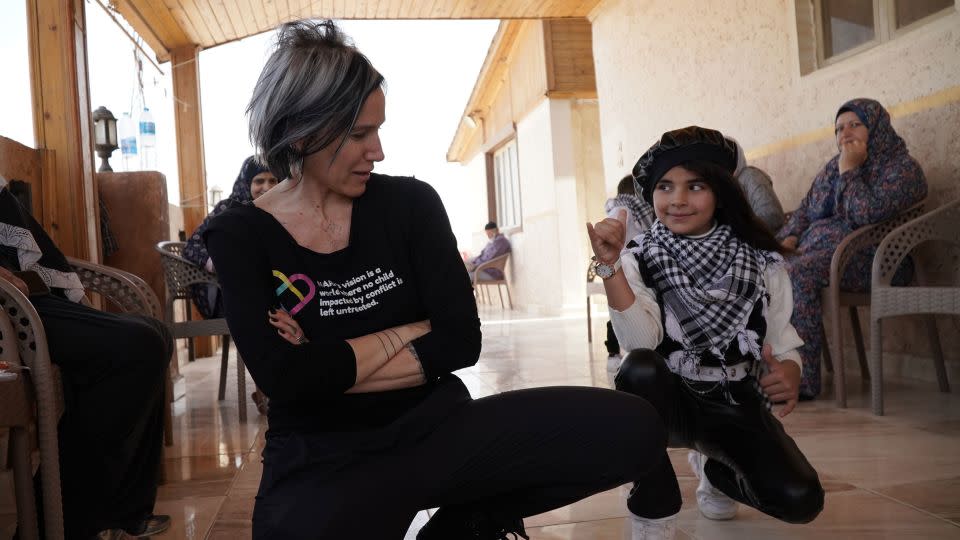Opinion: How the suffering in Gaza is different from other conflicts
Editor’s Note: Arwa Damon, an award-winning former senior international correspondent for CNN, is president and co-founder of the nonprofit organization International Network for Aid, Relief and Assistance (INARA). The views expressed in this commentary are her own. Read more opinion on CNN.
Note: This article includes descriptions of disturbing impacts of violence.
A child shrieks in pain in a medical tent at a field clinic in southern Gaza. He’s 7, with severe burns on his back that are being cleaned and slathered with balm. It’s an excruciating process that would be done under anesthesia, in the sterile setting of a hospital, in ideal circumstances. But after nearly seven months of bombing and shelling in Gaza, conditions of any sort have ceased to be even adequate, let alone ideal.

I’m in Gaza on a humanitarian mission with my charity, International Network for Aid, Relief and Assistance, which I established in 2015 when I was still a senior correspondent for CNN. We’re working on setting up medical stations and expanding the number of shelters and camps we work in.
I’ve worked in war zones for the last 20 years, both as a journalist and a humanitarian. I sometimes find myself rolodexing memories of Iraq, Syria, Libya, Afghanistan, of sieges and starvation, of families on the run seeking safety, as I try to home in on what makes the suffering in Gaza so different.
The answer, as it turns out, is all around me. It is the psychological obliteration: What makes the trauma different in Gaza is the sheer constancy of it. Trauma compounds trauma every single day; there is no respite, not even a brief one.
Death and destruction are not unique to the war in Gaza, but the scale and the scope are, as is the intensity and ferocity.
The constant bombardment is a dagger plunged repeatedly into the gaping wound of a crushed psyche. The soundtrack of every night and day is the relentless buzz of drones that taunts, “Oh you think you’ve survived? Just wait, death can still come.”
The screaming boy’s young mother looks like she’s weighed down by fatigue, sitting with her head in her hands mumbling — whether to herself or her son — “It’s OK, it’s almost over.”
But it’s not. She won’t be taking him home — their home doesn’t exist anymore. What substitutes for their home these days is a fly-infested tent. She won’t be able to ply him with ice cream as she did before the war. Famine remains a constant threat. The limited food rations consist of canned beans and lentils, and for that, she is deeply grateful. What she’s unable to tell him is, “Everything’s better. You’re safe now.” That lie would be so obvious, even the youngest children would know better than to believe it.
I smell the distinct stench of death and peer out through the tent flap. It’s emanating from the remains of those killed a week earlier that were only just recovered now, brought to this field clinic to be body-bagged and cataloged. The smallest corpse is a toddler about the size of my arm. The other remains consist of just body parts — I catch a glimpse of a foot and half a leg. I see a man in the corner, alone, crouched down sobbing quietly. They are all that is left of his relatives, someone working at the camp tells me.
These are the daily, harrowing images of loss and suffering that the population here endures every day. Even those who remain physically intact are often psychologically broken.
A 2022 study by Save the Children found that around 80% of children in Gaza reported feelings of sadness or depression among other negative emotions including grief and fear before the October 7, 2023, Hamas attack that sparked the war. Those numbers must surely now be at 100% — or very close to it. Parents and caregivers I’ve spoken to describe their children as being scared, anxious and angry. They are prone to bedwetting and lashing out, or at times become hyper-vigilant and hysterical.
The problem is that one cannot address the effects of this sort of trauma while it is still ongoing every day. Currently, my small INARA team provides services across 13 shelters and makeshift camps. We distribute everything from hot meals to washable sanitary underwear, but the crux of our activities centers around running mental health and psychosocial activities for children. These include group play, games, art and other creative outlets.
It suggests something else deeply sobering about the conditions of those who survive this war. Brick and mortar structures may eventually be rebuilt, but nobody can fully heal Gazans’ fragile, damaged psyches. Surgeries and bandages can’t help Gazans recover from emotional loss or shellshock.
Children are quite adept at expressing themselves through play. The activities provided by my group are emergency interventions targeting not the body, but the spirit. In other words, we try to create a temporary distraction and give children the small comfort of something to look forward to.

The children’s faces brighten the moment our team arrives. It helps the parents too in a small way, to see their little ones smile and laugh. The children’s songs we play are loud enough to drown out the drones and the explosions in the distance. As I watch them dance, play and race each other, my eye is drawn to one little girl sitting on a pink plastic chair with a doll in a sparkly green dress. She’s watching the others but it’s like she herself is not there. I’ve seen that before, too many times, in adults and in kids, physically there — but not fully there emotionally.
She reminds me a bit of another child I encountered, 4-year-old Ahmed, whom I met months earlier in a hospital in Egypt where he had been medically evacuated. Half his head is shaved. A long, angry scar worthy of Frankenstein is visible on his scalp beneath the hair that is beginning to grow back.
Ahmed is the sole surviving member of his immediate family. He, his sister and his parents were fleeing toward a shelter when a nearby building was bombed. “We thought he was also dead,” his grandfather, who was evacuated with him, told me. “But then 10 days later we found him in a hospital.”
His grandfather doesn’t know what happened to Ahmed in that time, what he witnessed, if he heard his parents and his sister’s cries of pain or if their deaths were instantaneous. Ahmed, who used to talk, has not said a word. But he does interact. His eyes brighten as I pull out books, plastic building blocks and other toys for him. He smiles, a little bit. He gives me a high five. He waves.
I ask Ahmed’s grandfather how he himself is holding up. “I can’t think about any of this. I can’t think about or mourn my son, my daughter-in-law, my granddaughter.” He sighs and shakes his head. “I don’t know what I am doing, where we are going, where life is going.”
The yo-yoing of positive developments in negotiations toward a ceasefire-hostage deal only to have them fall apart just adds to Palestinians’ mental anguish. Hope is dangerous, burning deeper each time it’s crushed. After months of deadlock, there are reports of a possible breakthrough in negotiations leading to a rise in hope, but also fear.
Israel vowed that if no deal is made for Hamas to release at least some of the 129 hostages in Gaza from its October 7 attack on Israel, it would launch a large-scale ground invasion into Rafah in southern Gaza where more than a million Palestinians have taken refuge. Israel has been warned by allies, including the US, against undertaking such an operation due to the potential for additional mass civilian casualties, but on Tuesday Israel’s military announced that it had seized control of the Palestinian side of the Rafah crossing, a vital entry point for aid to Gaza on the Egyptian border.

Like the children they are tasked with trying to protect, adults cannot process the pain, fear and anxiety that crush their psyches, threatening to push them over the edge and into insanity. No one can make sense of what Gazans have endured for more than half a year. It is in people’s faces — especially in their deadened eyes — and in their lethargic, mechanical movements when you see how the last seven months have gouged at everyone’s soul.
“I’m driving through a sea of zombies,” I morbidly think to myself as the car I’m in tries to weave its way through tents, stalls, donkey carts and human traffic in southern Gaza.
Yet one at the same time feels churning waves of pain emanating from each person, so powerful, so aching you feel like you are also drowning in an endless sea.
At one stop I make, a mother grabs my arm. “My son, he’s 7,” she says. “Every night he screams and convulses. He’s been doing this for two months. Ever since he saw his younger sister’s head fly off when the bomb hit.”
I feel like my brain freezes. Not just at the horror of what she is describing, but her monotone voice when she is describing it. She was there too; she also saw all of it. It hits me just how deep she’s had to bury her own emotions, and how much she has had to fight every day to make sure they don’t surface. If they do, if she cracks, she will completely break.
She reads my silence, as if she is reading my thoughts. “I have children who are still alive. They need me,” she says in that same tone of voice.
It is in being here that one starts to grasp the depth and breadth of the psychological destruction Gazans have endured. And if Gaza is to be “rebuilt” that too must be addressed. There is no full healing from this sort of trauma. Recovery of a sort is possible, but recovery does not mean forgetting. It means that the mental scars are kept in check so that perhaps in the future they will no longer be paralyzing, inhibiting, debilitating.
A few days after my encounter with the mother, I’m on a bus traversing the no man’s land between the Rafah crossing and the Egyptian side. There are a handful of us international NGO workers; the rest are mostly women and children. Some have medical papers; most have paid astronomical fees of around $5,000 to companies that act as intermediaries and provide travel approval.
As the bus door is about to slide shut, a young man jumps through and grabs his mother’s hands, kissing them. She and his sister are departing, he is staying. Those sitting around her start to cry softly as a deep sadness sweeps over them all.
“Stay alive, my son,” I hear her tell him. “Stay alive.”
For more CNN news and newsletters create an account at CNN.com


